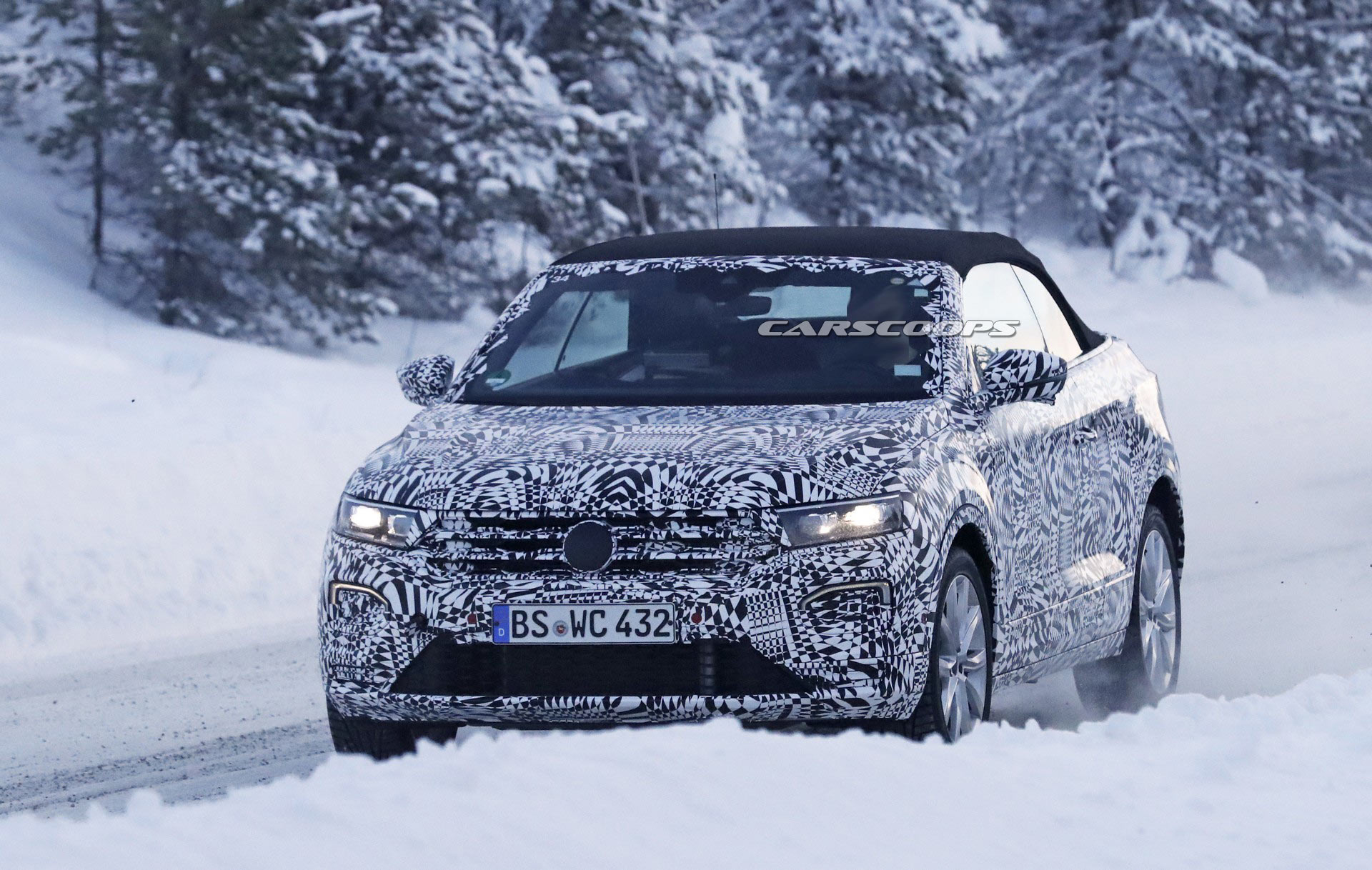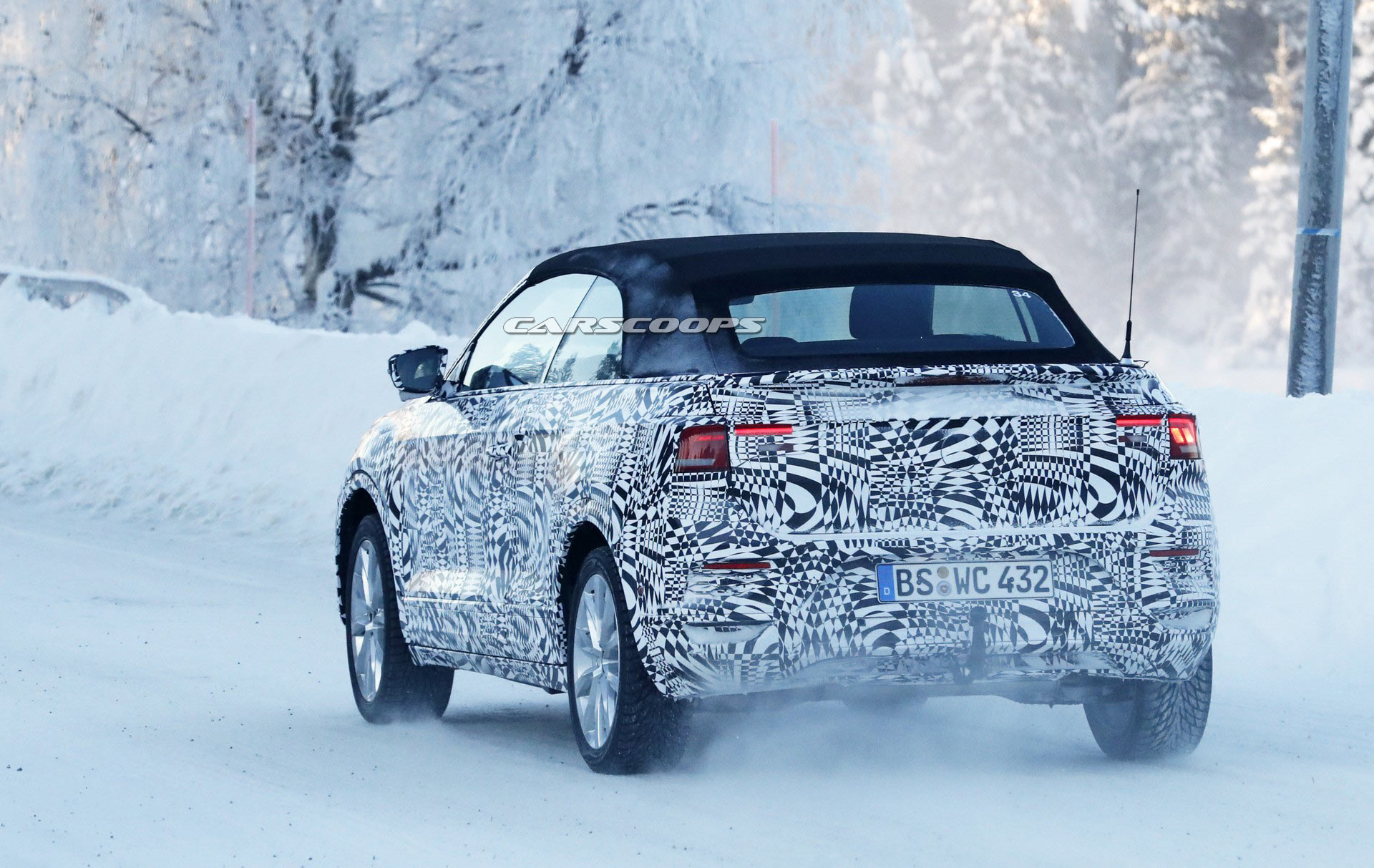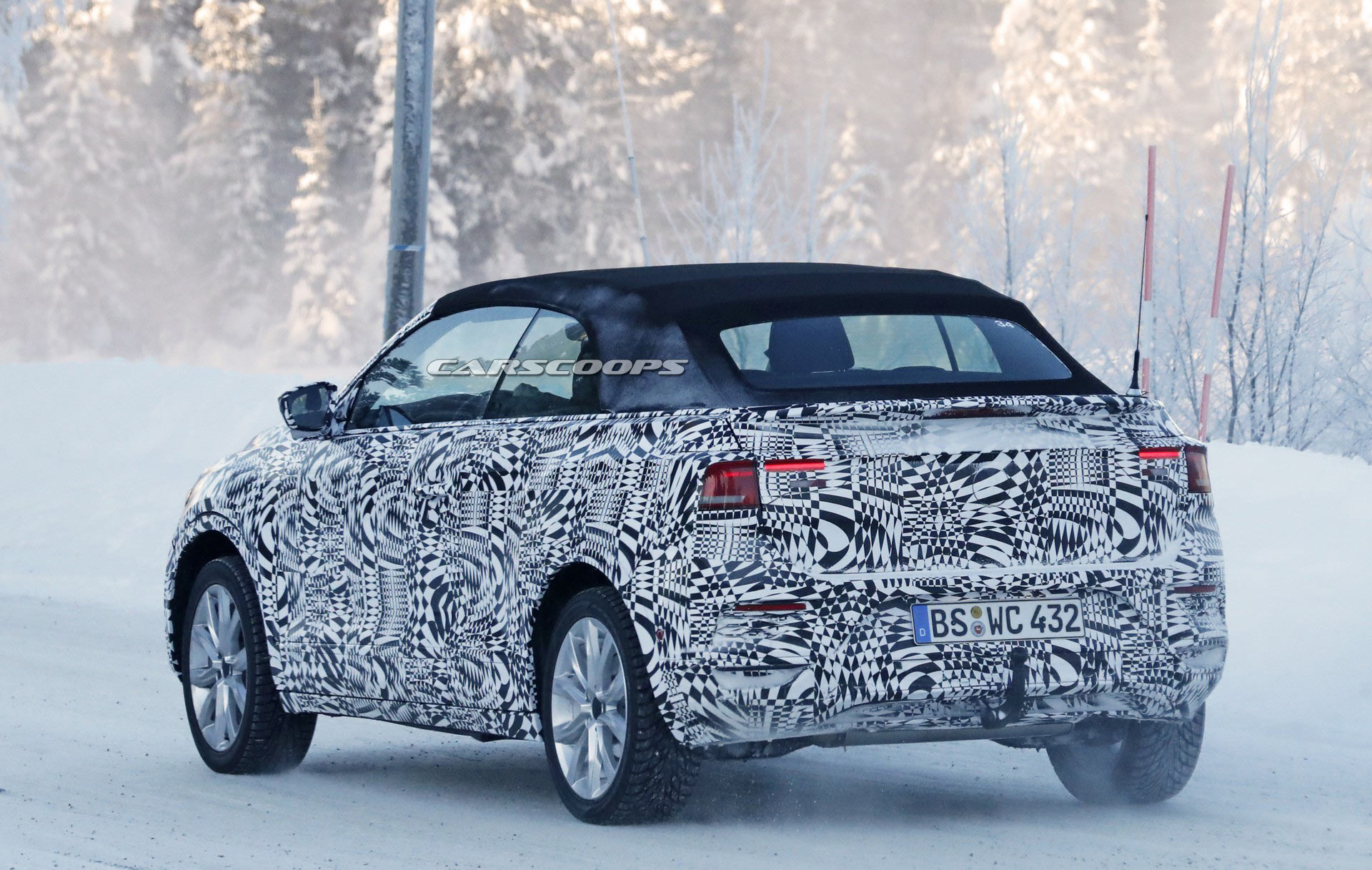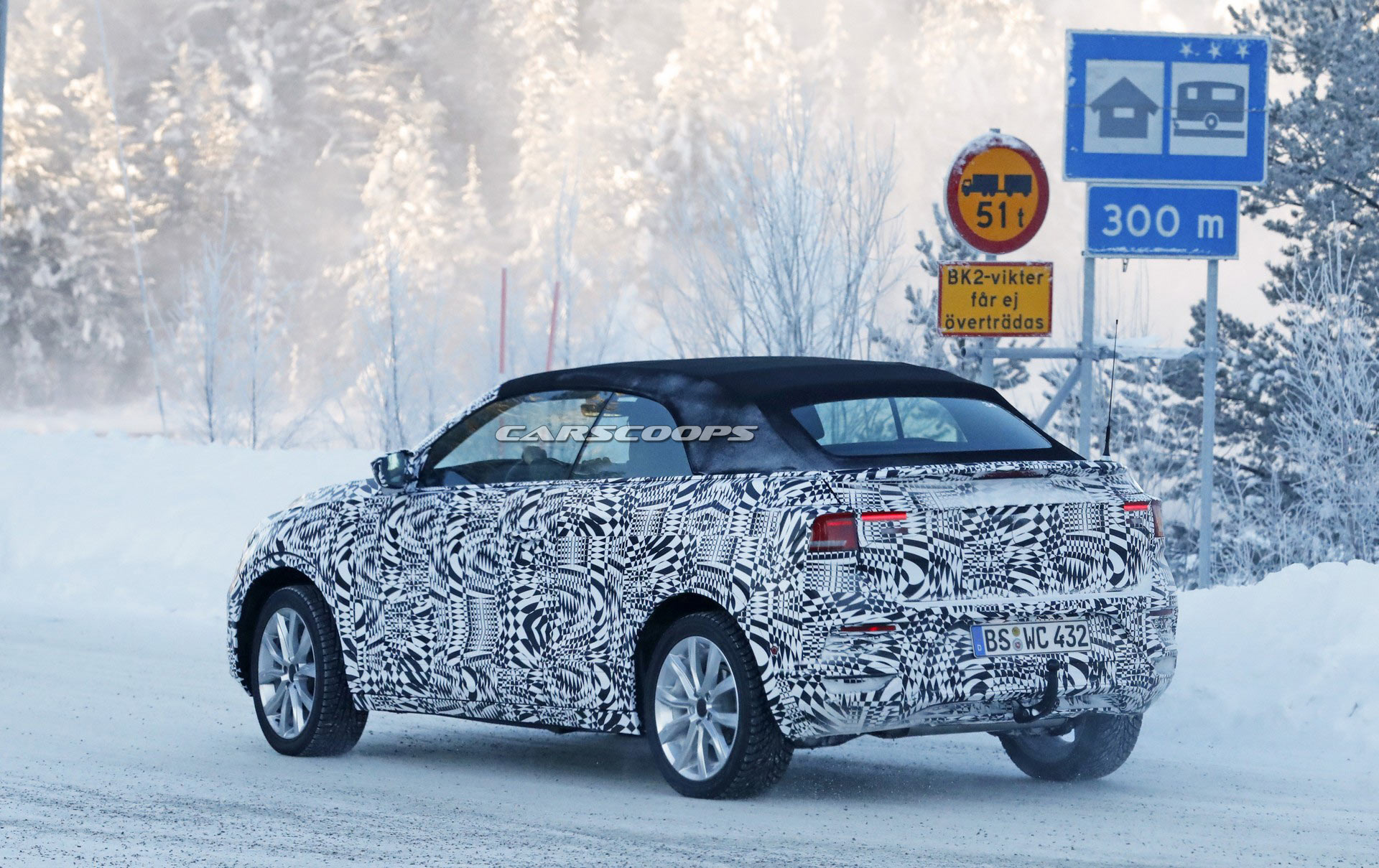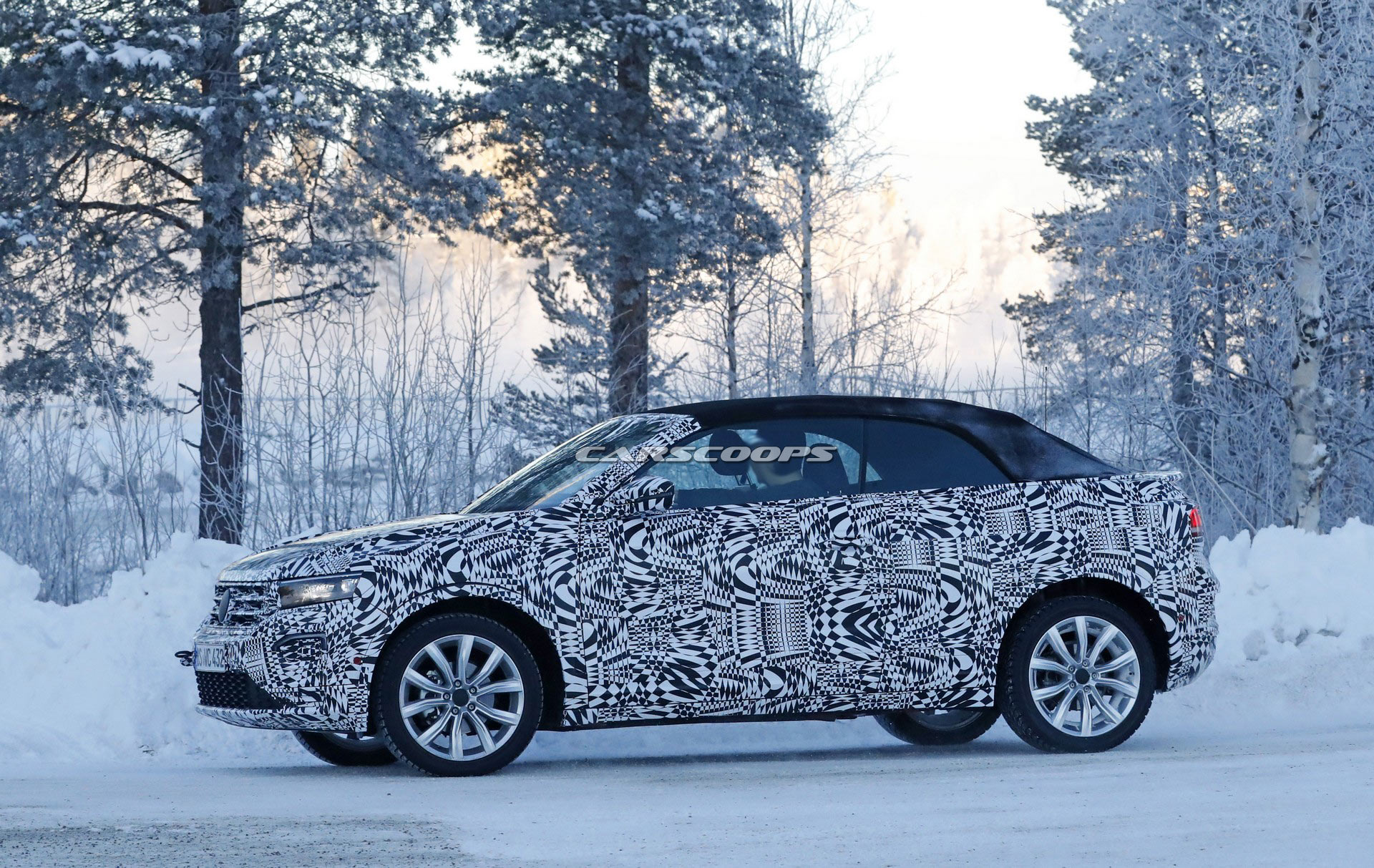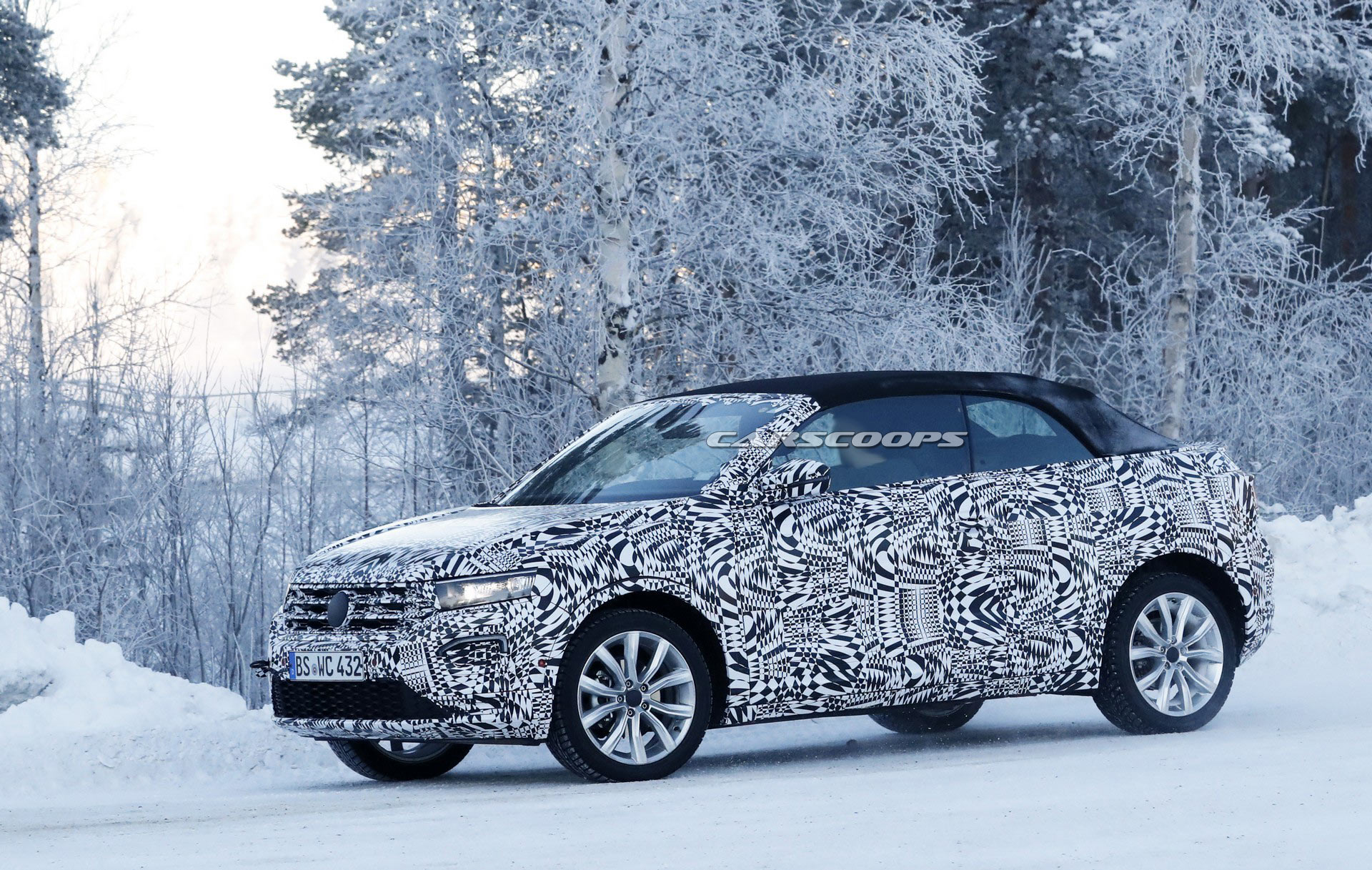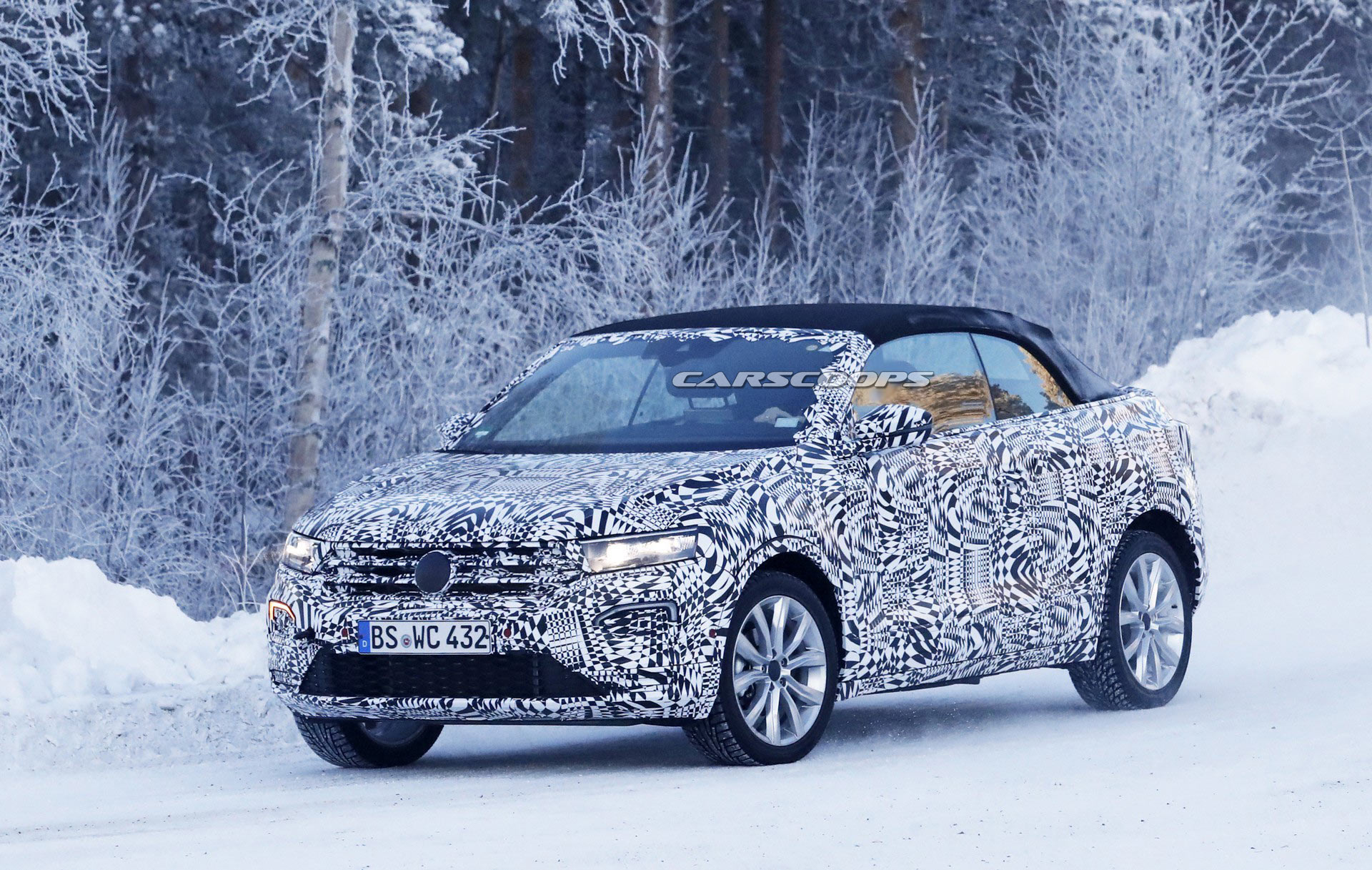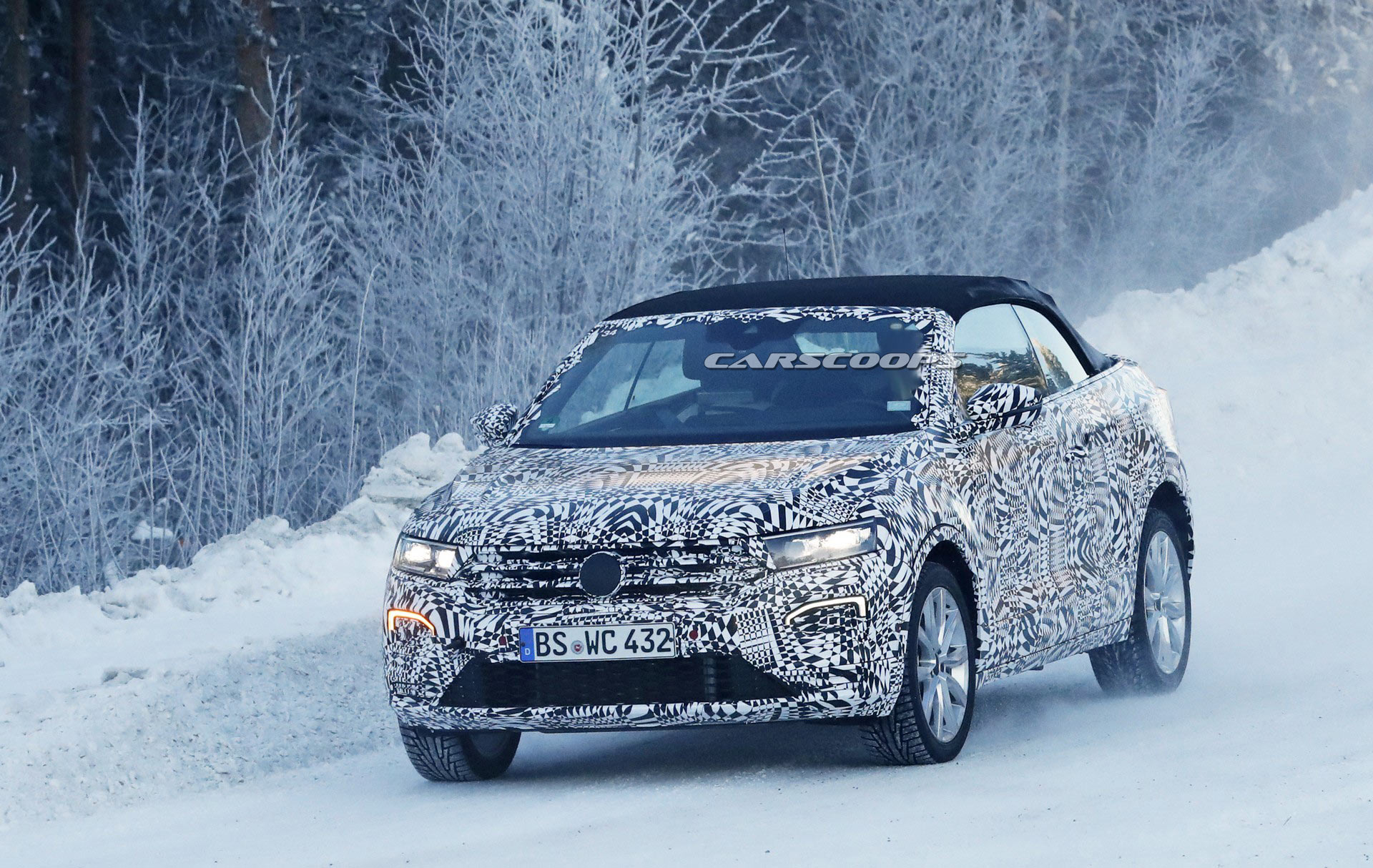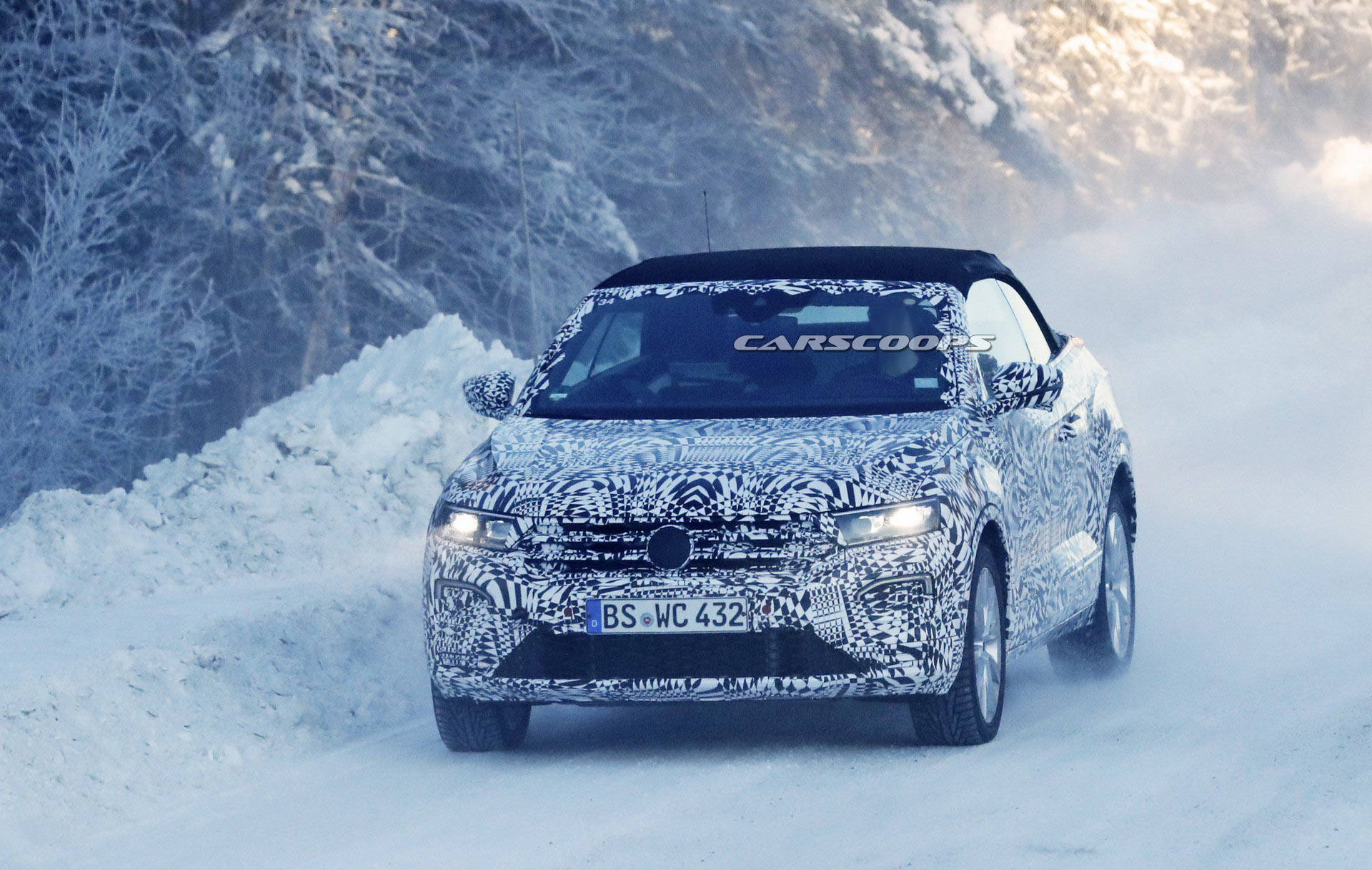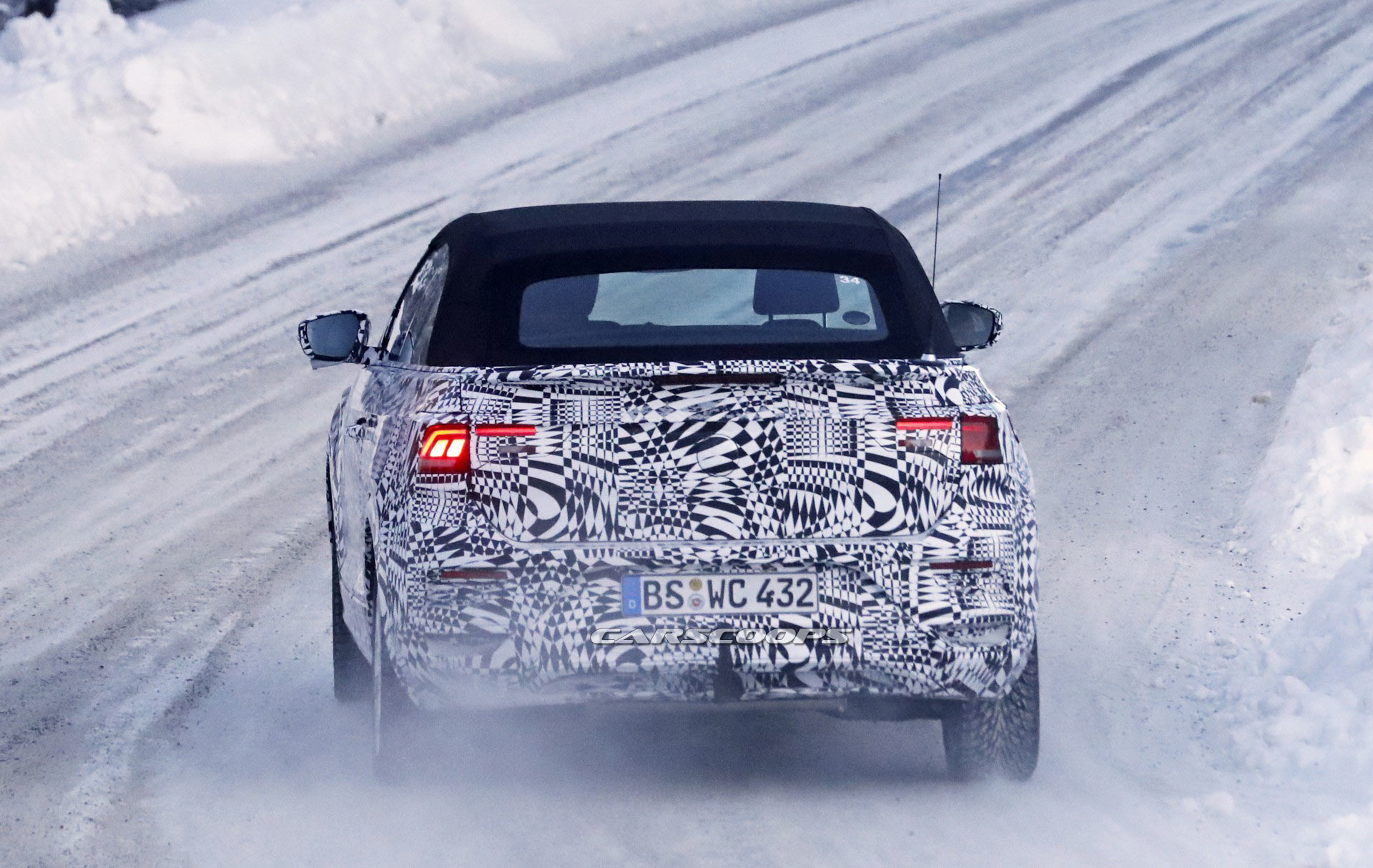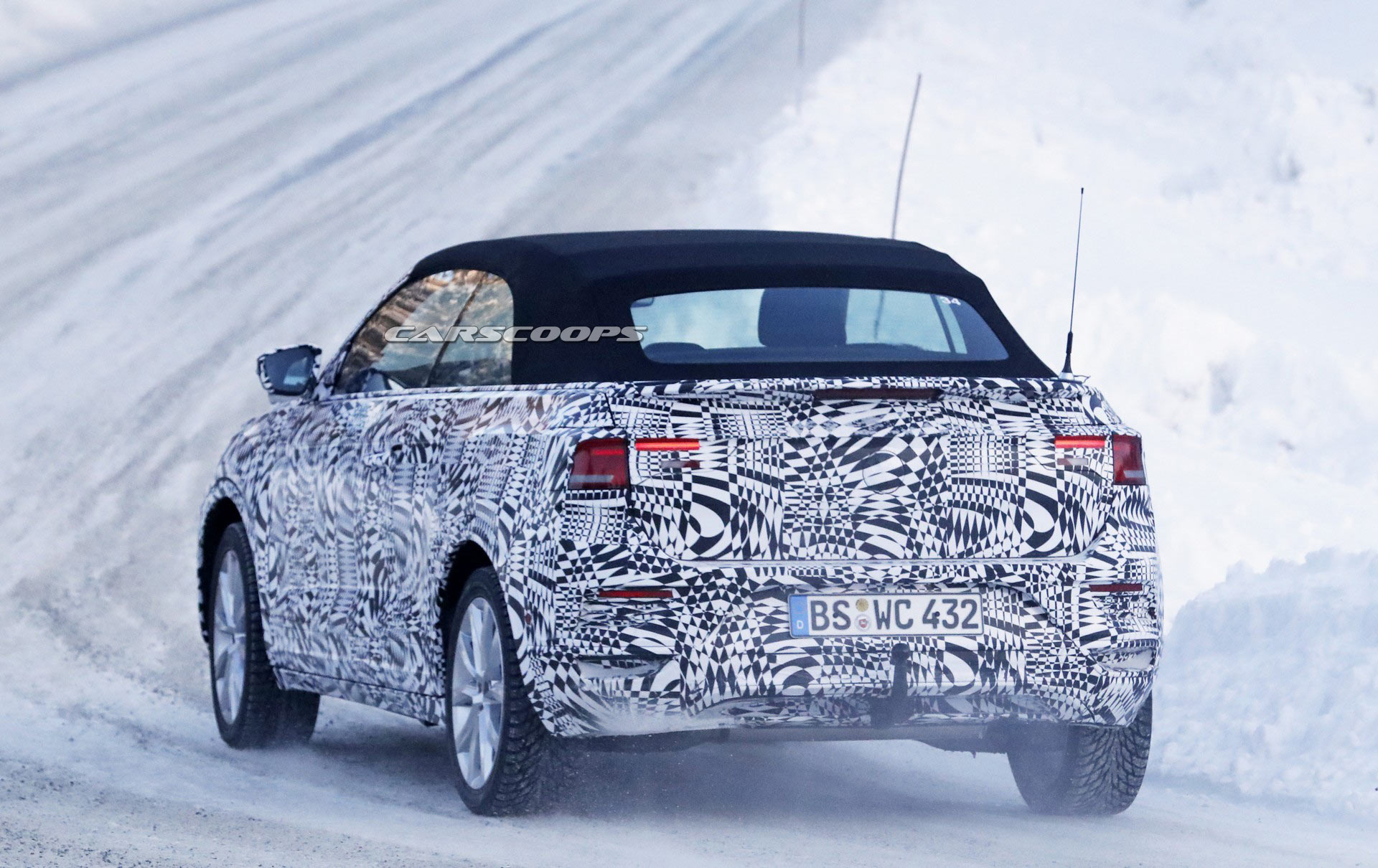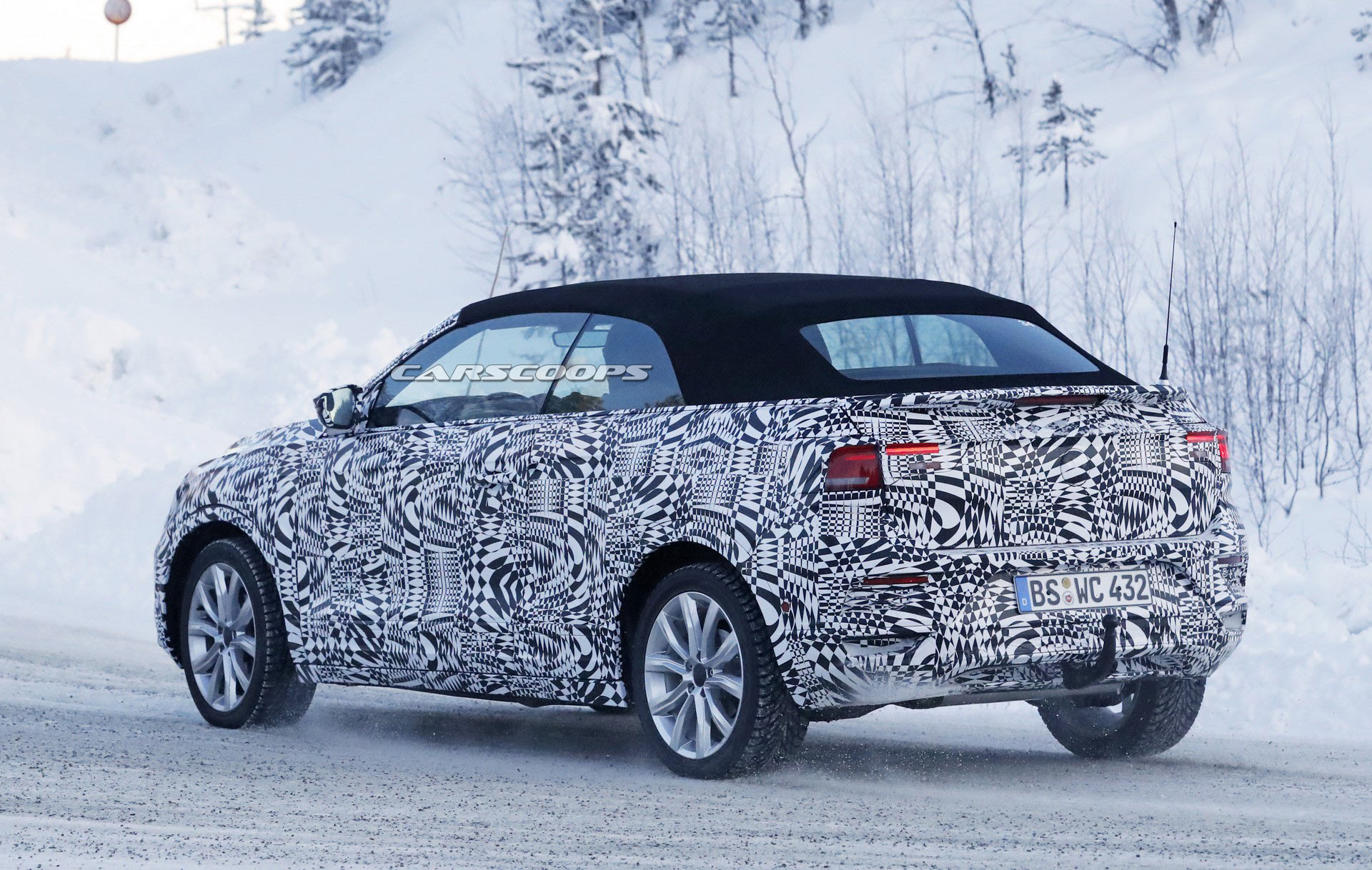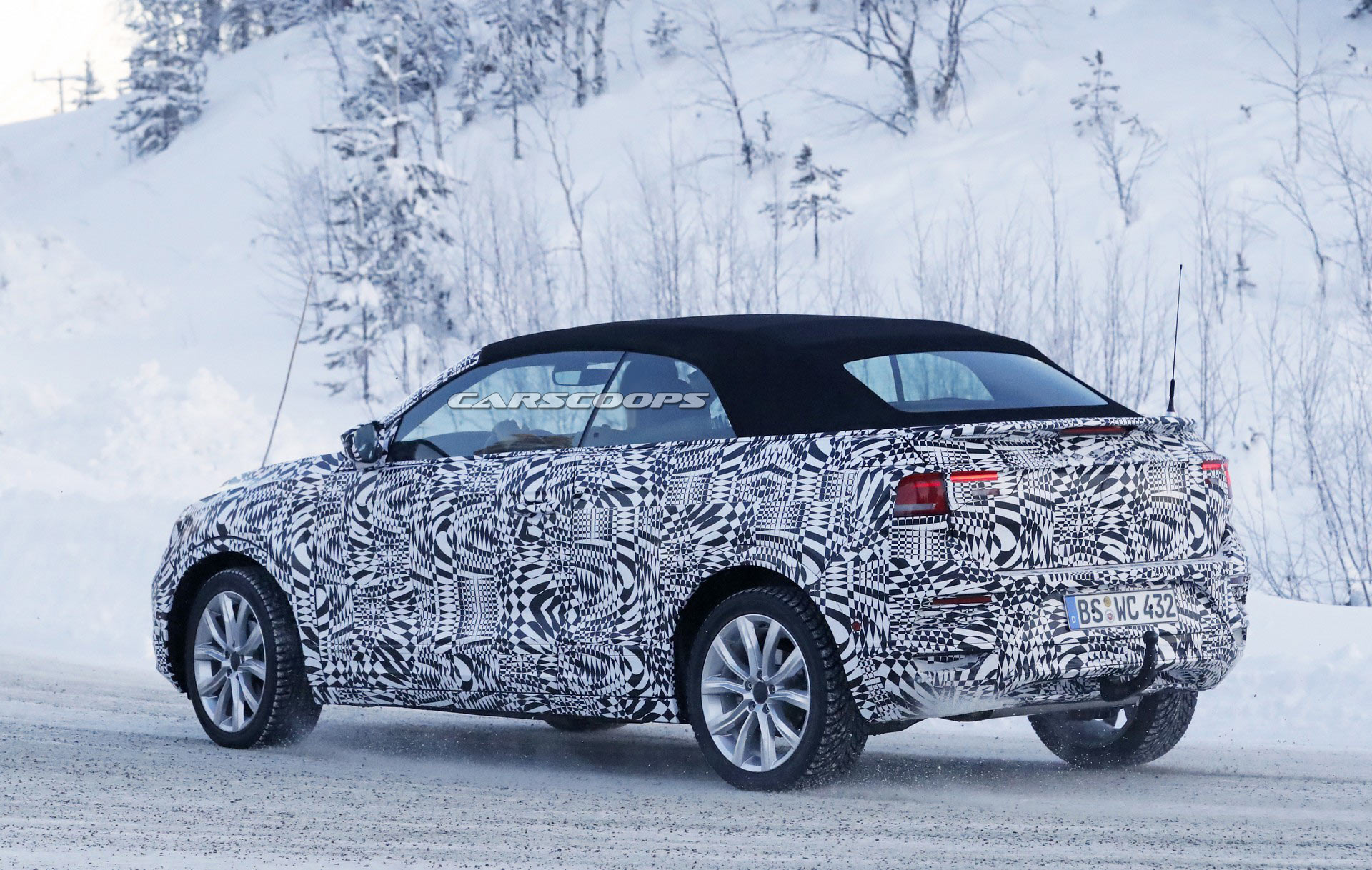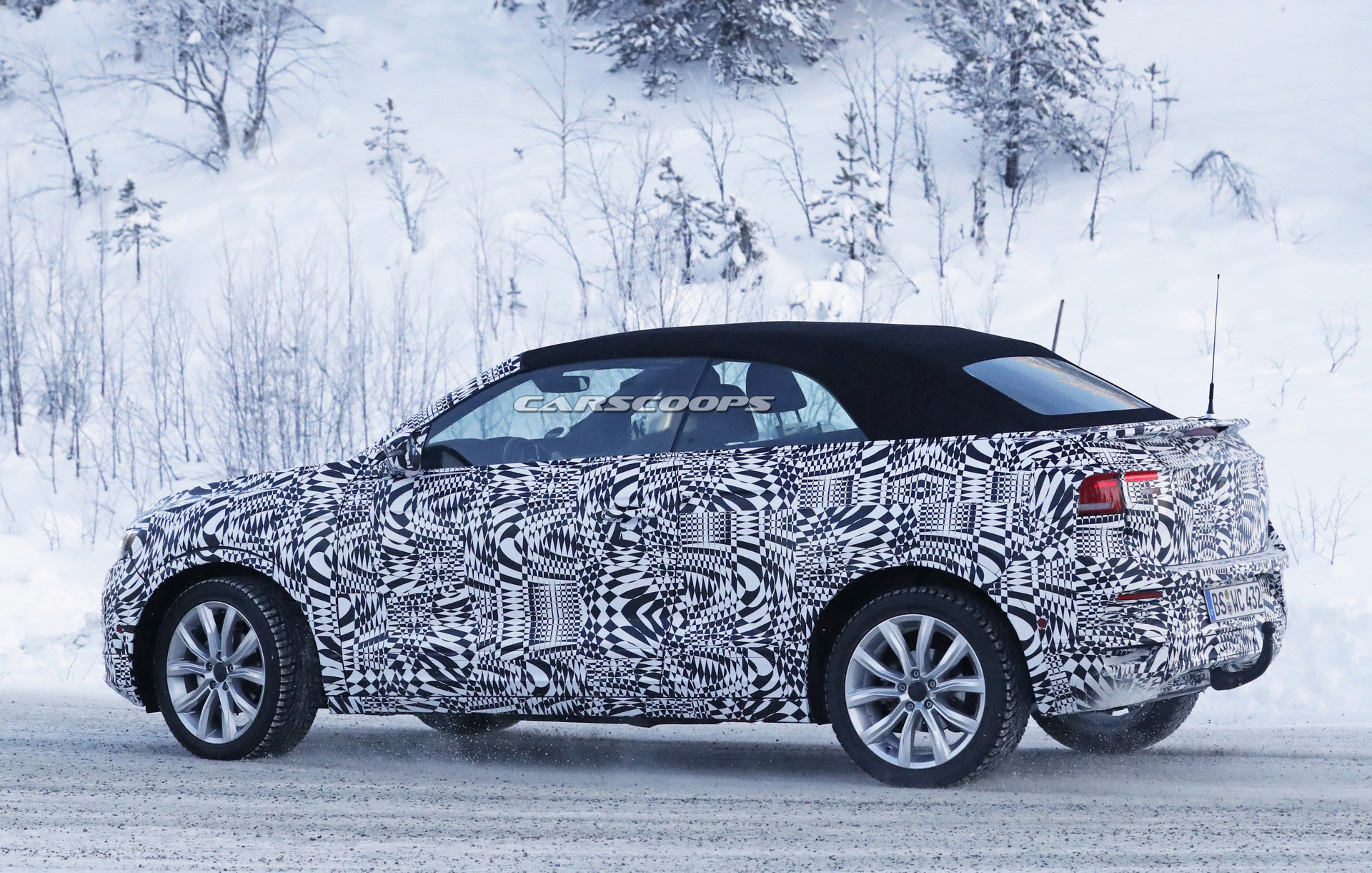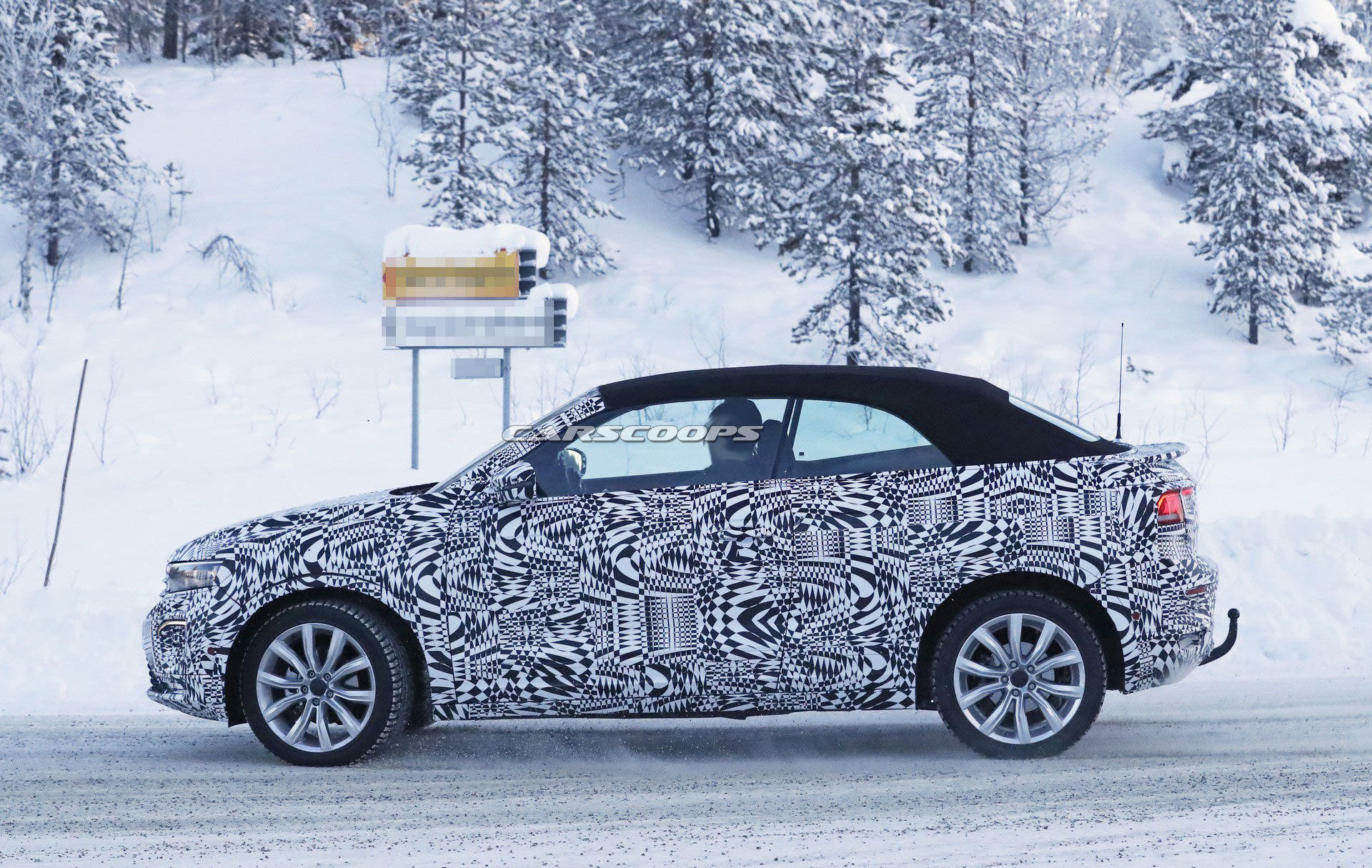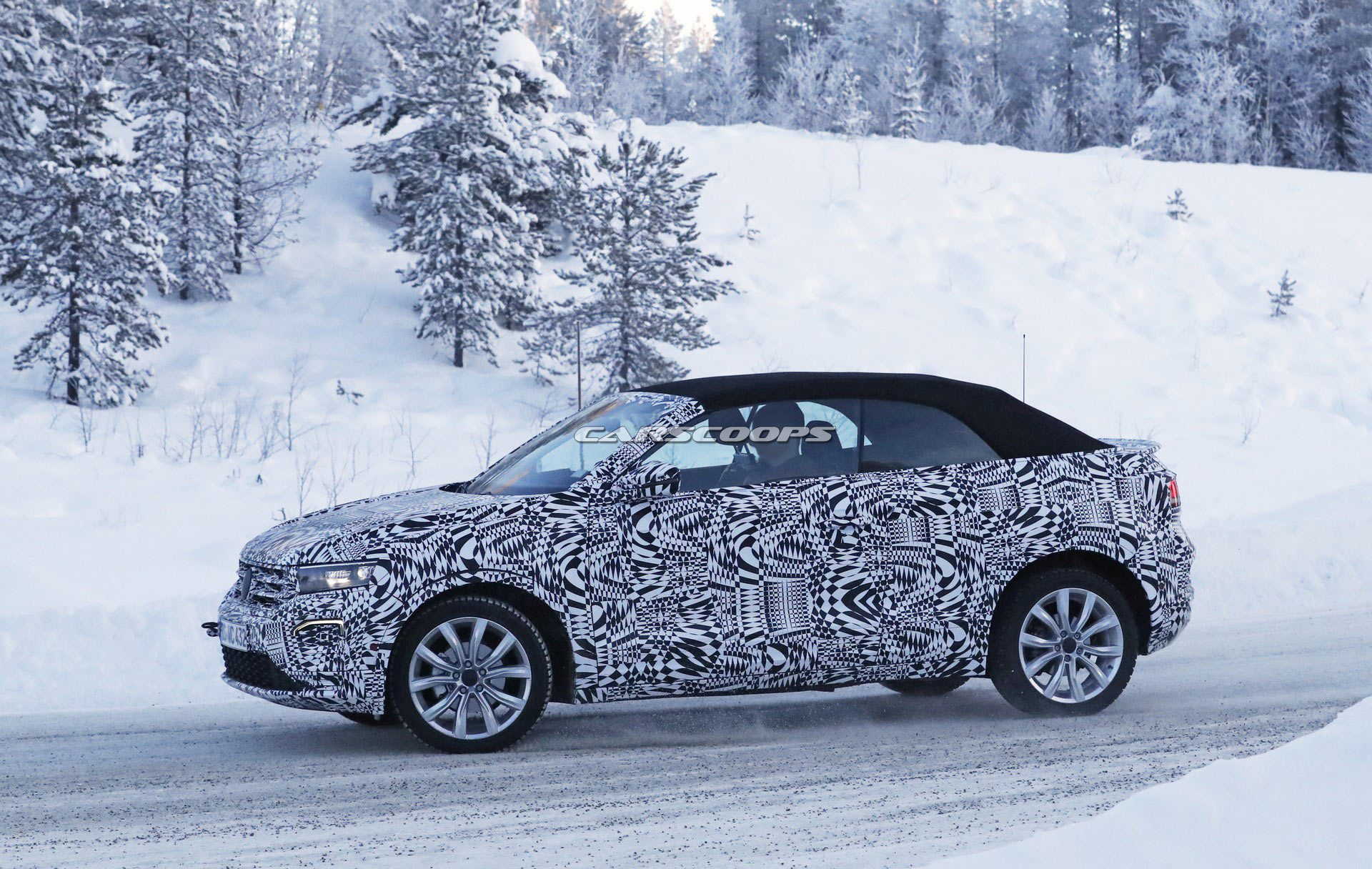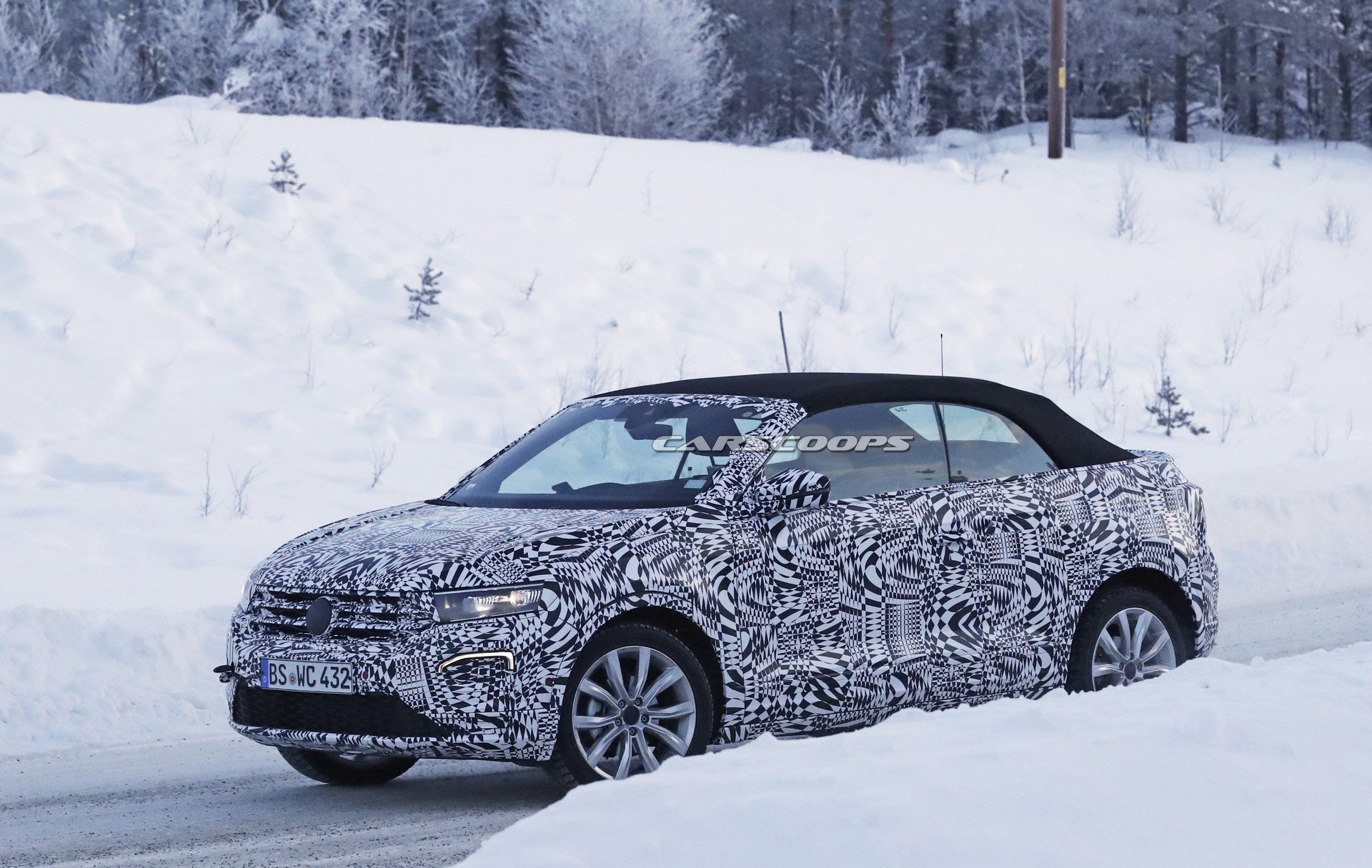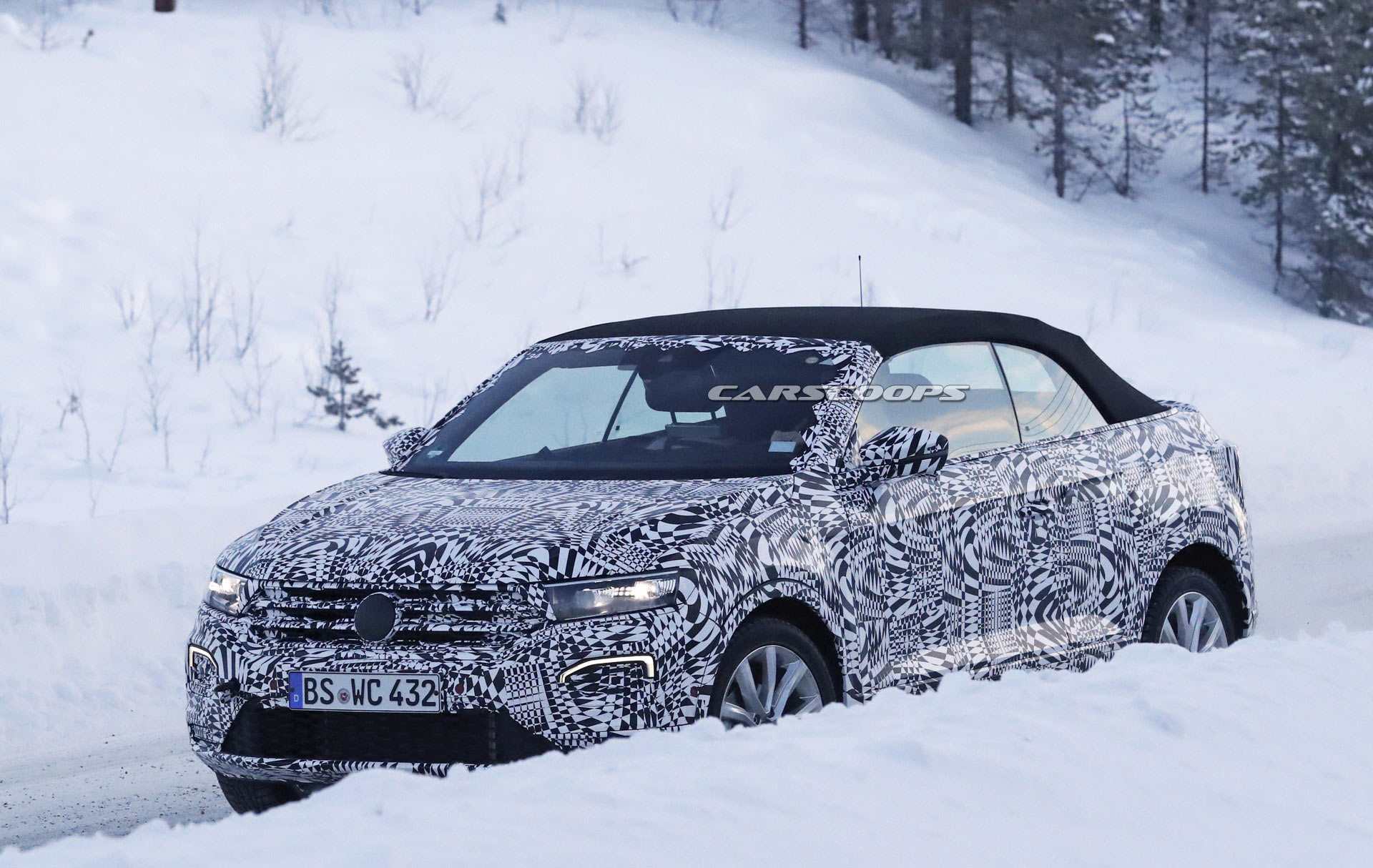Crossover convertibles, such as the Nissan Murano CrossCabriolet and Range Rover Evoque Convertible, haven’t been terribly successful, but Volkswagen is hoping for better luck with their T-Roc Cabriolet.
Originally announced last February, the model will become the brand’s first crossover-based convertible. Unsurprisingly, this required a number of modifications.
While the front of the crossover closely resembles the standard model, virtually everything behind the hood is unique to the convertible. Among the key changes are more rakish windscreen and a shorter body that only features two doors. The convertible also has an upward sweeping beltline and a retractable soft top that is similar to the one used on the Golf Cabriolet.
The unique styling continues out back as the convertible a tall trunk with an integrated spoiler and a third brake light. Despite these changes, the convertible appears to have familiar taillights and a rear bumper that is shared with the standard standard T-Roc.
Spy photographers couldn’t get close enough to snap interior photos, but the cabin is largely expected to carryover. However, the T-Roc Cabriolet is expected to be a four-seater with unique front seats that tilt forward to provide access for rear passengers.
Engine options will carryover from the standard T-Roc, so we can expect an assortment of petrol and diesel powertrains. Choices remain unconfirmed, but there should be a 2.0-liter TSI four-cylinder with 187 hp (140 kW / 190 PS) and 236 lb-ft (320 Nm) of torque. We can also expect a 2.0-liter TDI four-cylinder which develops up to 187 hp (140 kW / 190 PS) and 295 lb-ft (400 Nm) of torque. The model may also be offered with 1.0- and 1.5-liter TSI engines as well as an entry-level 1.6-liter TDI developing 113 hp (85 kW / 115 PS) and 184 lb-ft (250 Nm) of torque.
Volkswagen has already confirmed the T-Roc Cabriolet will be built at the Osnabrück plant and the first models are slated to roll off the assembly line in the first half of 2020. Once production ramps up, Volkswagen will be able to build up to 20,000 units annually.






